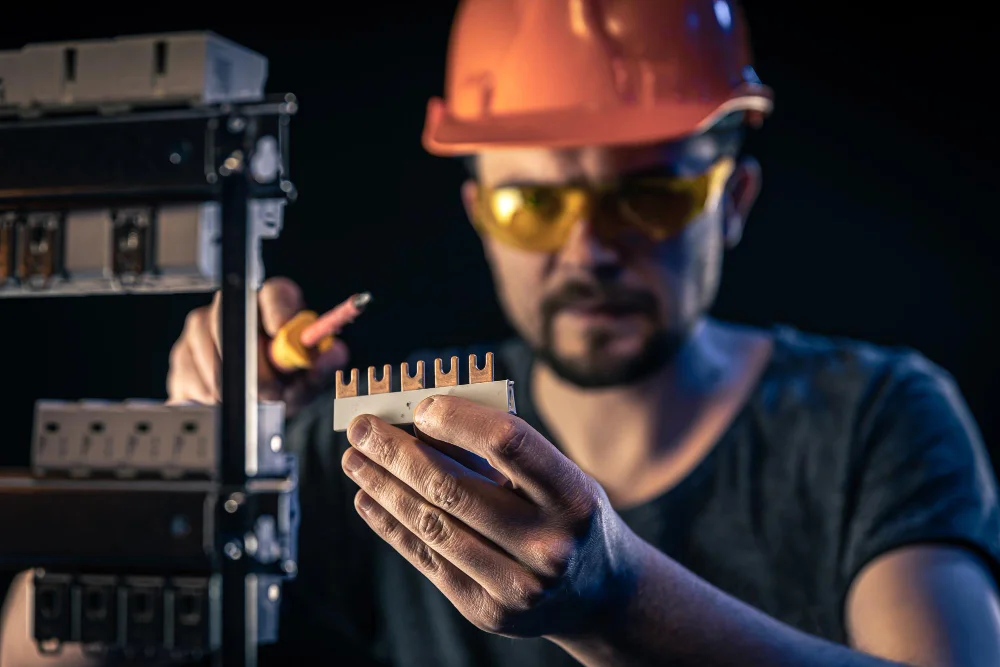How Circuit Protection Prevents Damage in Electrical Systems
As long as there is at least one area in your life that is run electronically from home appliances to industrial systems and everything in between your life contains circuitry. Nevertheless, these systems are susceptible to several forms of destruction caused by overcurrent, short circuits and voltage changes. And this is exactly where circuit protection comes into play. It is an important factor to protect electronic devices and their longevity, safety, and reliability.
What is Circuit Protection?
These are circuit protection devices against high current or high voltage. The role of breaker is to prevent high current from flowing which can result in the overheating, fire, and sometimes burn or damage of electric components. Below are the circuit protection devices. · Fuses · Circuit Breakers · Surge Protection Devices · Relay Switches ·
Types of Circuit Protection Devices
1. Fuses A fuse is one of the most common and simplest elements of circuit protection. It is a metal wire or filament that melts when too much current flows through it. Electric mains when fuse blows it produce an open circuit which halts supply of electricity and prevents further damages. A blown fuse requires replacement in order to re-establish the circuit.
2. Different Type Resetting One of the attributes of circuit breakers is it can be reset while a fuse will be replaced after it has tripped. They work with an internal switch that cuts out after a set current value is exceeded. It cuts off the circuit but can be reset by hand once the problem is fixed. One of the main reasons why your residential and commercial electrical panels use circuit breakers is that they work way better as a circuit protection device than others.
3. These devices assist in limiting voltage spikes (like lightning strikes or power surges, for example) protecting electronics. They operate by directing the voltage spikes to the ground, protecting delicate electronics from damage. Surge Protectors They protect the appliance such as a computer, television, etc., and home appliances.
4. Overcurrent is the current that runs through the circuit above the pre-considered safe level. Unlike thermistors, which exhibit a change in resistance with temperature, polyfuses reset themselves (once the overcurrent condition has been removed). Commonly used in low-voltage circuits like in power supplies and chargers.
How Circuit Protection Works to Prevent Damage
Three major types of failure of any electrical system: overcurrent, short circuits and voltage surges to avoid circuit protection devices are used. This is how do they combat these risks:
1.This can happen due to wrong wiring, equipment fault, or overloading. Excessive current causes wires and components to overheat eventually leading to fires and damage of sensitive components.
2. Avoiding Short Circuits A short circuit occurs when electric current travels in an unplanned course, usually due to malfunctioning wiring or broken parts.
This establishes a low-resistance route for your current to flow suddenly in a huge number, quickly shooting appliance wires, insulation, and appliances with heat.
3. Protection from Voltage Surges Voltage surges, often generated by lightning strikes, power line issues, or switching operations in the grid can exceed the limit and damage electronic devices. Your devices have microprocessors, capacitors, and more that don t like small voltage spikes that can turn permanently damaging.
The Importance of Circuit Protection
In each and every part of the electrical systems, the necessity of circuit protections is being felt. Here are some of the reasons why it is important:
Equipment Longevity: Circuit protection safeguards expensive electronic parts from destruction; thus prolonging device life and avoiding expensive repairs and replacements.
Compliance with Standards: Electrical safety regulations apply to many different industries. Adherence to these compliance requirements necessitates proper circuit protection, which is directly related to ensuring safety for people and property.
Prevention of Downtime: Electrical faults can lead to system shutdowns or malfunctions and, subsequently, long periods of downtime in an industrial or commercial environment. Circuit protection reduces the risk of these interruptions.
Conclusion
Circuit protection is an essential system for the safety, reliability and longevity of electrical systems. Using protective devices like fuses, circuit breakers, surge protectors, and thermistors, overcurrent, short-circuit and voltage surge can be eliminated or minimized in the electrical circuit [250]. Electrical systems would be significantly more susceptible to failure, costly damage, and in the worst events potential safety hazards without circuit protection. Circuit protection is the first step in the proper direction towards ensuring not only safe, but efficient and durable electrical systems in homes, offices, or any industrial settings.






